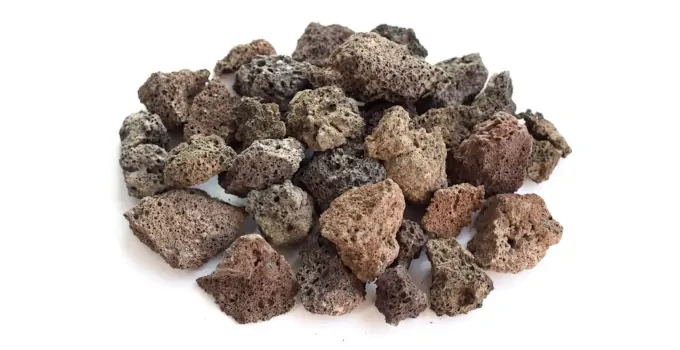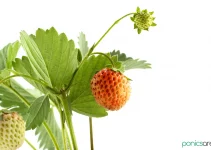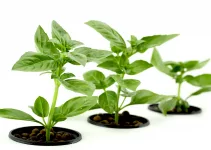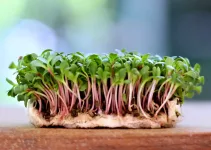Are there any particular aquaponics grow media that you should use over others or would every growing medium out there work just fine? Answering this question is pretty much the whole point of this article.
Table of Contents
Do Hydroponics Grow Media Work as Aquaponics Grow Media?
I already wrote a post on the best hydroponics growing medium where I recommended and analyzed quite a few growth media, especially based on the type of hydroponics system that people can use at home.
But, as I’ve established in my analysis on hydroponics vs aquaponics, these two growing options might be related but there are major differences between the two, as well.
Aquaponics is a combination between hydroponics and aquaculture. With aquaponics, both plants and some species of fish (tilapia is very popular) are grown at the same time. It’s a double win.
The fish take care of providing the nutrients that the plants need so, there’s no need for buying/making nutrient solutions, like it happens with hydroponics systems.
But there still needs to be a growing medium that supports the plants.
Obviously,
The growth media that are used in hydroponics are also a fit for aquaponics. After all, the role of the growing medium remains the same.
Even so, there’s still the matter of establishing which is the best growing medium for aquaponics. I will make a few recommendations that should be your focus when building your own aquaponic system.
Aquaponics for beginners by Garret Denis is a book that explains in detail how to build all kinds of aquaponics systems. I love the detailed instructions.
The role of the growing medium in aquaponics

Aquaponics growth mediums: Lava rocks, expanded clay aggregate and gravel
With aquaponics systems there are a couple of different set-ups that one can build:
- the plants can be placed in grow beds (12 inches deep) – the net pots with growing medium are the ones supporting the plants and these net pots are placed in grow beds, the waste water is pumped up into the grow bed with the help of a water pump (very similar to the nutrient film technique system from hydroponics)
- or the plants can be placed in a Styrofoam raft, which will float on the water where the fish live (this type of aquaponics can work perfectly for lettuce) – very similar to the deep water culture system, the plants are housed in net pots with growing medium and the net pots are inserted in holes in the raft, there’s no need for a water pump, only an air pump and an air stone are needed
- if you’re using a timer with your aquaponics system, that can be called an ebb and flow aquaponics system
In every configuration, the role of the growing medium is to support the plants from seedling stage until full-growth stage, while giving them the necessary oxygen.
The growing medium also houses the nitrifying bacteria that turns the fish waste into nitrites and then nitrates to feed the plants.
Plus, it offers worms the perfect comfortable habitat to leave in. Worms help plants battle diseases, suppress plants insect pests, plus a deep grow bed with a nice population of worms needs to be cleaned out quite rarely, once every 5 years or so.
Best Aquaponics Grow Media
Let’s analyze the best aquaponics grow media. I won’t offer you too many choices, you won’t get overwhelmed but you’ll know which choices will work perfectly.
1. Expanded Clay Aggregate (Hydroton) – My Top Recommendation

This type of growing medium, the hydroton, is very popular with those building a deep water culture (DWC) system at home.
So, it can be used as one of the best aquaponics grow media without a doubt.
It’s great whether you’re using a polystyrene raft to float the plants on top of the water or if you’re choosing to have grow beds filled with expanded clay aggregate.
The benefits of expanded clay aggregate as one of the best aquaponics grow media are:
- proper oxygenation for the roots, which is always a top consideration when picking out a good growth medium
- doesn’t store too much water but that’s not at all a problem if the plants are fitted in a raft that floats on the water 24/7
- high drainability – it can dry out more quickly than other media, which is why it’s not a first choice for the ebb and flow system where water is sent into the growing bed based on a timer
- not too light that it floats but not too heavy, either, just right size and weight
- non-degradable, reusable, the clay pebbles can be rinsed and reused
- also rinse them thoroughly before using the hydroton for the first time until there’s no more red liquid flowing
- pH neutral varieties
- put them through a vinegar test, checking for limestone – simply put a few in a glass with vinegar, if it fizzles then don’t use them
- a bit pricey but the fact that the expanded clay aggregate can be reused lessens the cost over time
Where to Buy?
Check Price and User Reviews Here
2. Lava Rocks
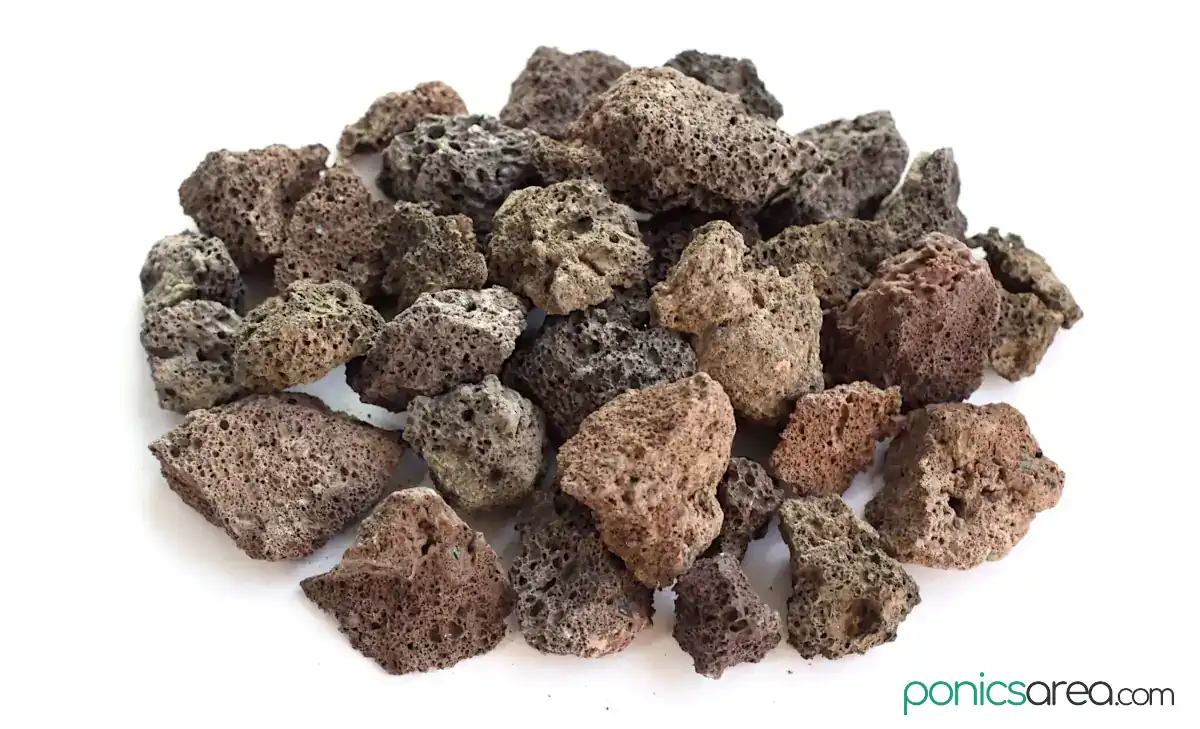
Let me be honest: lava rocks are an awesome choice as an aquaponics growing medium. They should be a top choice for everyone.
If you’re choosing to build an aquaponics system with grow beds to house the plants then you can simply fill in the grow beds with lava rocks, which are porous rocks.
Lava rocks work better than plain rocks because:
- these are porous rocks and that’s their main advantage
- they hold the water for longer periods of time
- their absorption benefits are quite good
- they also provide good aeration to the roots
- plus, lava rocks have the capability to filter out biological organisms and parasites
- it’s also a light-weigh growing medium, which is always awesome when using grow beds
- pH neutral
Now you see why this is one of the best aquaponics grow media.
The water pump will pump up the waste water over the grow bed filled with lava rocks and the bacteria will transform the waste into nitrates.
You can use gravity to drain the clean water from the culture bed and return it to the fish.
The same process takes place if the grow beds are filled in with expanded clay aggregate. However, maybe you can’t find the clay pebbles but you have easier access to lava rocks. You can choose between the two aquaponics grow media without problems, the plants’ growth will be the same.
3. Gravel
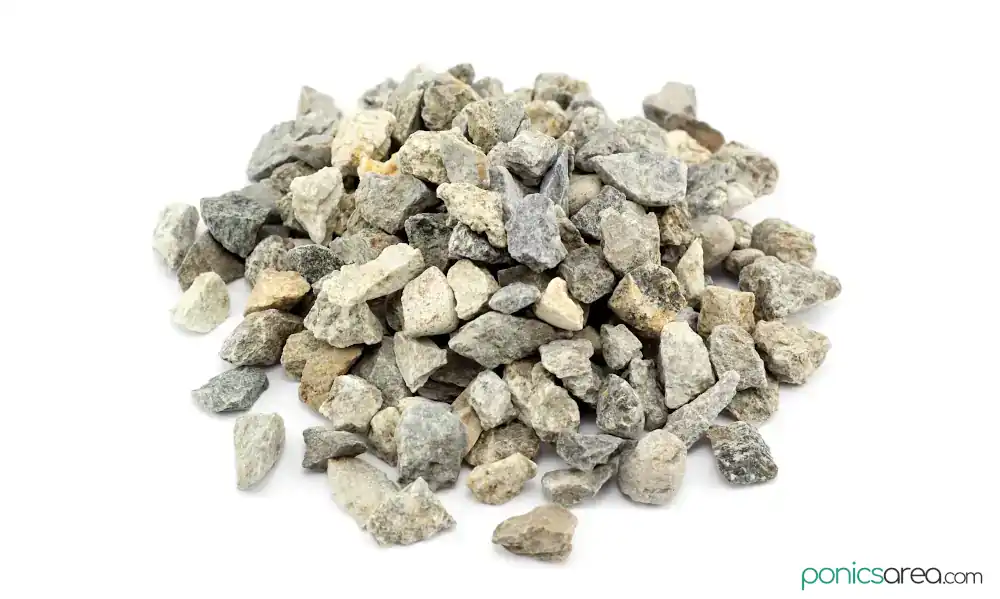
Gravel is another fantastic option when it comes to choosing the best aquaponics grow media, especially when it comes to building aquaponic systems where plants are grown in grow beds.
It has some great benefits:
- it collects the bacteria needed to process the waste water, transforming the ammonia into nitrates to feed the plants
- the layer of gravel should not be too deep
- it’s a much better choice than sand because water can not flow as freely through sand as it does through gravel
- cracked gravel, river gravel & pea gravel can be used as well
- the gravel should have round edges
- really cheap, one of the least expensive aquaponics grow media
- can easily offer support to bigger taller plants
- on the other hand, gravel is denser than lava rock and expanded clay aggregate, it’s definitely not as porous
4. Expanded Shale
This is another awesome choice for aquaponics grow media with plenty of benefits:
- pH neutral
- porous
- a clean medium that can be used immediately
- not too heavy but not lightweight, either
- it will be a fantastic choice for grow beds
- it has a good surface so it can colonize the nitrifying bacteria for feeding the plants with nitrates
- another reusable option
5. Growstones
Growstones are one of the best aquaponics grow media and it’s a perfect choice for a clean and healthy aquaponics system.
The clean part is ensured because this medium is made from glass. They fit well in grow beds.
There are even some ready-made aquaponics kits that are sold with growstones as an aquaponics grow media. I am happy to see that because it’s an excellent medium.
This growing medium has the following benefits:
- lightweight and porous
- provides the needed moisture and aeration to the roots
- great moisture retention capabilities
- smooth surface for the bacteria to colonize
- pH neutral
- can be reused but make sure to thoroughly clean the growstones to remove any plant debris before using them again
- good replacement for any of the above aquaponics growing media
- they need to be presoaked for a few days before use, just to ensure that they won’t change the system’s pH
How to Pick Aquaponics Grow Media
When choosing the best aquaponics grow media you must be aware of a few features:
- pH neutral
- the growing medium shouldn’t be too small, it can cause clogging
- it needs to be able to colonize bacteria
- non-degradable
- grow media like coco coir are not fit for aquaponics – it’s organic and it will break down in aquaponics, it will also discolor the water
- a 12-inch deep grow bed is the standard depth
- rinse the growing medium of dust and debris before using it
- avoid limestone – to test for limestone you can do the vinegar test (put some pebbles in a cup with vinegar and if it fizzles then it can’t be used because it can damage the system’s pH)
- if you’re building a system with grow beds, there are plenty of growing media to choose from – expanded clay aggregate, lava rock, gravel, expanded shale, growstones
- expanded clay aggregate is pretty much the best option in a raft-system – with the polystyrene raft configuration, we must choose a lighter aquaponics grow medium because that raft is really light, it’s also the reason why these types of systems work so well for lettuce and basil, light water-loving plants
- if you’re using a raft aquaponics system (water-based grow bed) and you’re germinating the plants in rockwool cubes then you can transplant the seedlings together with the rockwool cubes, you’ll place the rockwool cubes with the plants in the net pots – if you’re using 3-inch net pots then the rockwool can be surrounded by expanded clay aggregate to keep the rockwool stable and out of sunlight
Building an aquaponics system might be more complicated than building a hydroponics system but, at least, choosing the proper aquaponics grow media will be simple, there are just a few very good options to choose from.
FAQs on Aquaponics Grow Media
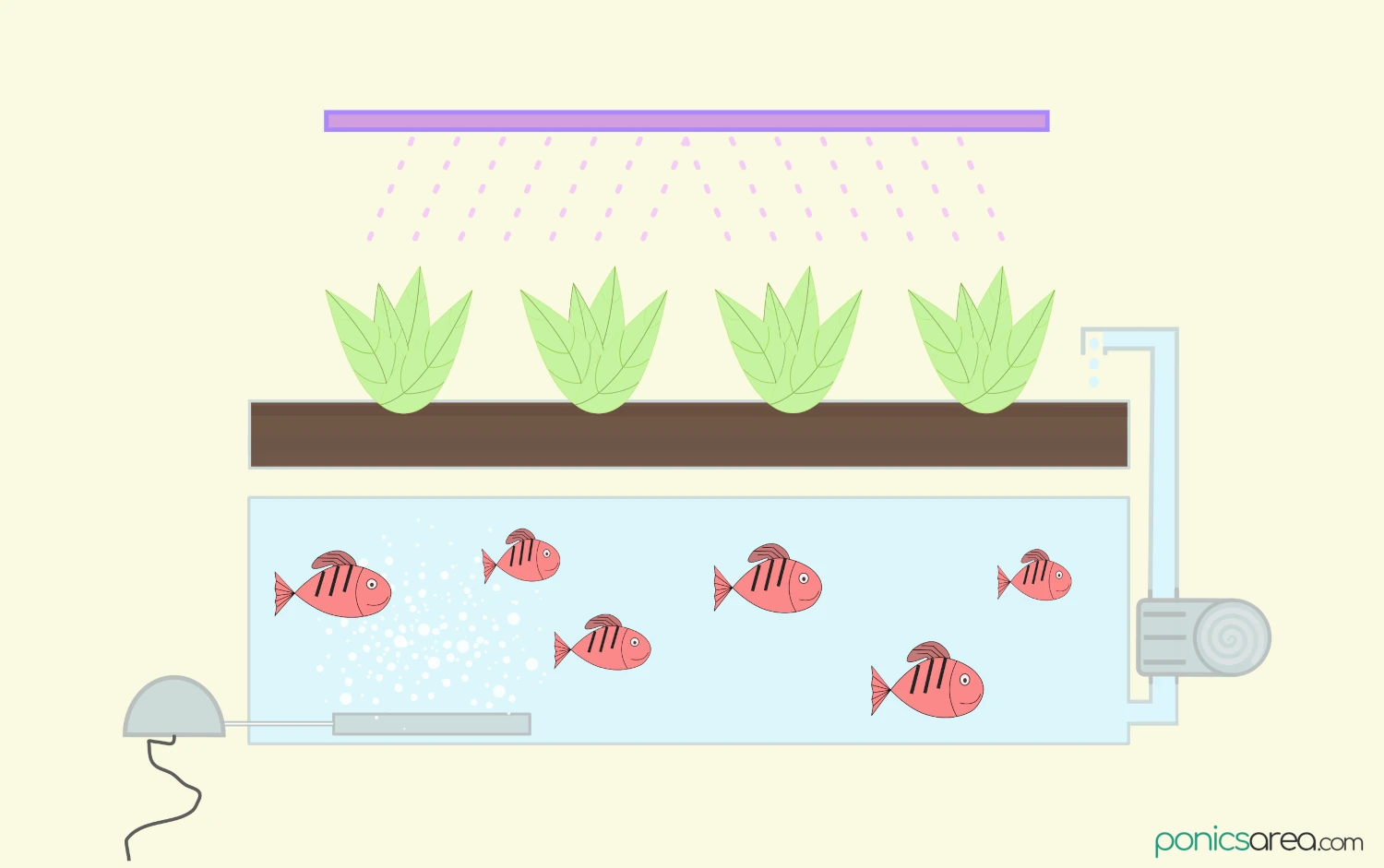
Illustration of an aquaponics system
My post should pretty much answer all the questions you might have on which growing medium should be used in various aquaponics systems but there might be some that I haven’t answered.
Q. Can rockwool be used in aquaponics?
Rockwool cubes are usually used to germinate seeds. Once the germination is done, the seedlings can be transferred with the rockwool in the aquaponics system. There’s no need to remove them. In most cases, there will be another primary growing medium (hydroton, lava rocks etc.) so, rockwool can be regarded as the secondary one.
Q. Does pea gravel work for aquaponics?
Gravel in general is one of the best growing media for aquaponics and it’s quite popular because it’s also one of the cheapest options. Cracked gravel, river gravel and pea gravel are all varieties that can be used in grow beds. The only thing to consider is that gravel is not as porous as lava rock and hydroton but can sustain the growth of large plants. The 3/4 inch pea gravel will fit well in an ebb and flow aquaponics system. Just make sure to do the vinegar test first to check for limestone. If it fizzles, don’t use it.
Q. Can you use coco coir in aquaponics?
No, it’s not recommended to use coco coir in aquaponics because it’s organic and it will break down in aquaponics, it will also discolor the water. Lava rock is a much better option.
Q. Can you use sand in aquaponics?
No, absolutely don’t use it. Sand is just too fine. In the first place, it can clog the system. Secondly, water doesn’t flow as freely through sand as it does through larger aquaponics grow media, like gravel, which is a s great substitute for sand.

